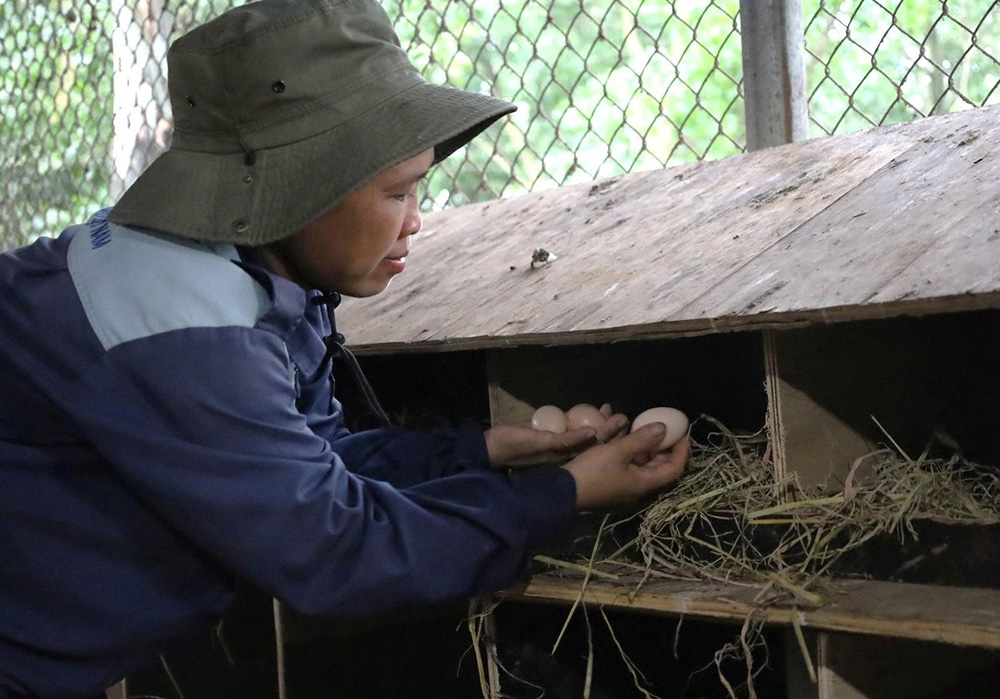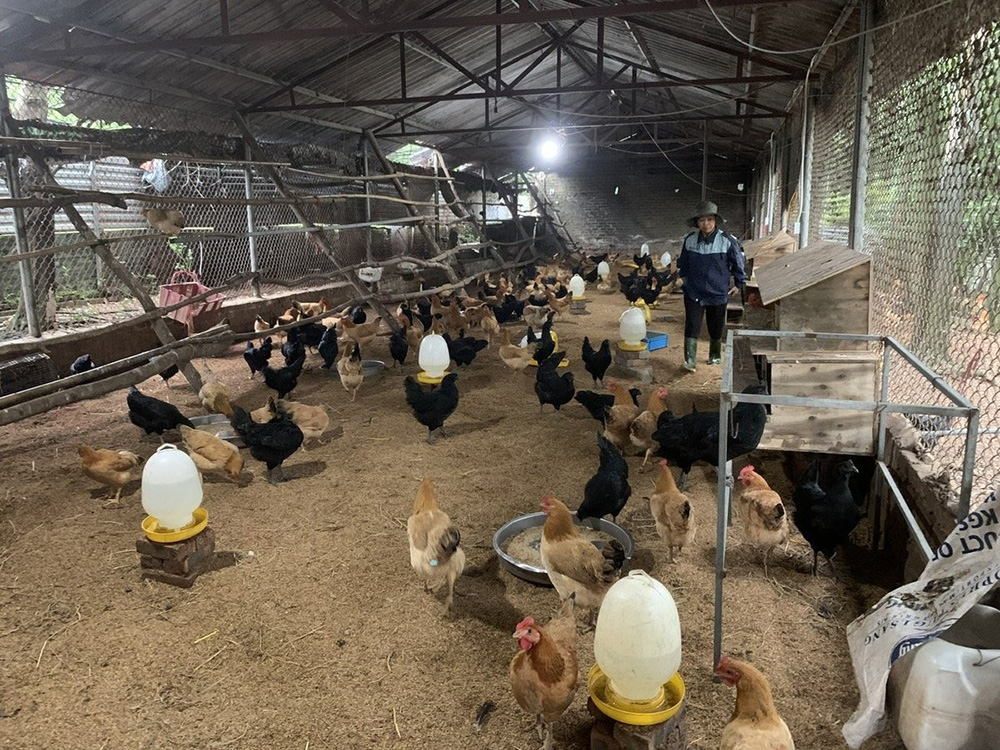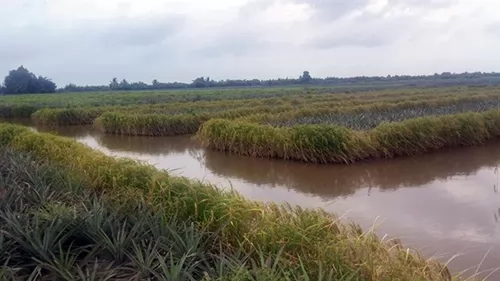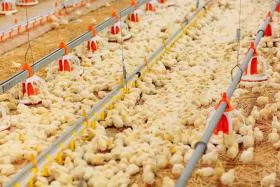Biosecure livestock farming fosters a green economy

Kim Anh Commune aims for at least 70% of large-scale farms to apply microbial-based models by 2026. Photo: Hoang Hien.
(VAN) Kim Anh commune (Hanoi) is shifting to biosecure livestock farming to improve product quality and increase sustainable economic value.
The key to green economic growth
Since its establishment in mid-2025, Kim Anh commune (Hanoi) has identified livestock farming as its pillar of the local economy. From a purely agricultural area, Kim Anh is gradually transforming its production toward biosecurity models, using microbial products as the “key” to green economic growth and rural environmental protection.
The commune’s total herd reaches over 15,000 heads of cattle and pigs, and more than 70,000 poultry this year. Vaccination coverage maintained 100% of the plan, with no major outbreaks. Local authorities have encouraged farmers to shift from small-scale to concentrated livestock farming, applying biological products to treat waste and take better care of animals.
According to Pham Van Binh, Deputy Head of the Kim Anh Economic Office, building a biosecure livestock chain means controlling the entire process, from breeding, feed, and environment to slaughter and distribution. “Kim Anh promotes the development of collective economies by forming livestock cooperatives and associations. By 2026, 70% of large-scale farms will apply microbial-based models, with at least one or two livestock products meeting the 3-star OCOP standard or higher,” he said.
To support the transition, the commune has organized technical training sessions on microbial fermentation and feed mixing to help reduce production costs. The local government also works directly with suppliers to secure preferential prices, making technology more accessible. Many households have invested in upgrading barns, building biogas systems, and applying microbial products in waste treatment.
“Microbial-based livestock farming is not just a technical solution—it’s a shift in production mindset. If small-scale, environmentally unregulated farming continues, the livestock sector can’t grow sustainably. The microbial-based model turns waste into resources, reduces pollution, increases economic value, and promotes circular production,” Binh said.

Nguyen Thi Thu Thoan (Kim Anh commune, Hanoi) takes care of her chickens in the microbial-based model, which help reduce odor and improve productivity. Photo: Hoang Hien.
Double benefits with the microbial-based chicken farming model
Following the commune’s orientation toward eco-agriculture and experiential tourism, residents in Kim Anh commune have actively adopted green, eco-friendly models, with microbial-based chicken farming proving to be the most notable among them.
One of the pioneering models belongs to Nguyen Thi Thu Thoan, Director of the Thu Thoan Microbial Chicken Cooperative. Starting as a small farmer, she boldly switched to raising chickens with fermented microbial feed. She combined the feed with natural herbs such as turmeric, lemongrass, codonopsis, and phyllanthus to boost the flock’s immunity.
Sharing her journey, Thoan said, “At first, I just wanted safe food for my family. After learning microbial fermentation techniques, I tried it and realized it made the chickens healthier and the meat tastier. The model not only secures my income but also protects the environment, so no more smelly barns like before.”
The biggest challenge, she noted, is the lack of farmland. Her family has to lease land from others, often being forced to relocate when the owner reclaims it, leading to extra costs and production disruptions. Nevertheless, with technical support and market linkages from the commune, the Thu Thoan Microbial Chicken Cooperative has built its own brand, earning Hanoi’s 4-star OCOP certification. Thoan’s model has inspired many farmers in the commune to visit, learn, and experiment with microbial techniques, showing that the commune’s direction aligns well with Hanoi’s green agriculture strategy.
However, challenges remain. Infrastructure is still inadequate, livestock areas are interspersed with residential zones, and environmental control is difficult. Some farmers hesitate due to initial investment costs or the lack of technical know-how.

Thoan’s barn floor is lined with microbial bedding, which helps neutralize odors and naturally produces organic fertilizer after each batch. Photo: Mai Dan.
Kim Anh Commune has set a key goal for 2026: to enhance training, provide microcredit support, plan concentrated biosecure farming zones, and expand demonstration models for farmers to easily learn from.
To realize this goal, the commune is working with city-level agencies to develop policies that encourage businesses and cooperatives to invest in green livestock farming. The ultimate goal is to increase awareness so that farmers shift their mindset from “farming to survive” to “farming sustainably.” More frequent training sessions on using microbial products for waste treatment, composting, and by-product recycling are laying the groundwork for this transformation.
Authors: Mai Dan - Hoang Hien
Translated by Samuel Pham
Maybe you are interested

International efforts help preserve Vietnam pheasant
Belgium's Antwerp Zoo will contribute two young birds and conduct genetic research to ensure the released population maintains healthy diversity.

Farmers earn high incomes from pineapple, shrimp and rice cultivation on same field
KIÊN GIANG - Farmers are seeing higher incomes from using the same field to grow pineapple and rice and breed shrimp in Kiên Giang Province's Gò Quao District.

Active walking in broiler chickens - a flagship for good welfare
Automated assessment of broiler chicken welfare poses particular problems due to the huge number of birds involved and the range of different welfare measures currently being proposed.





